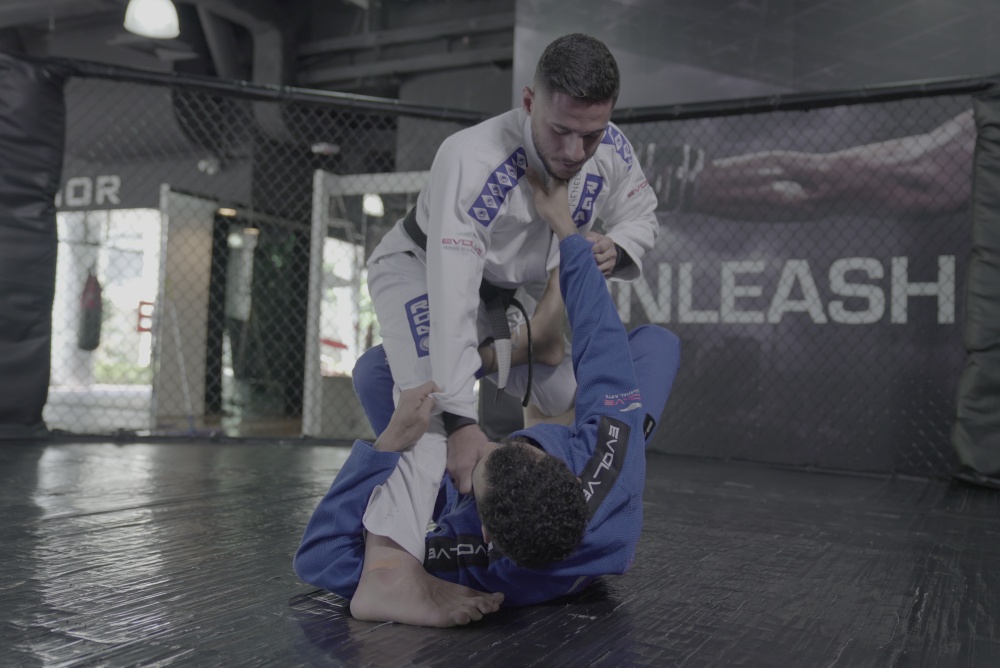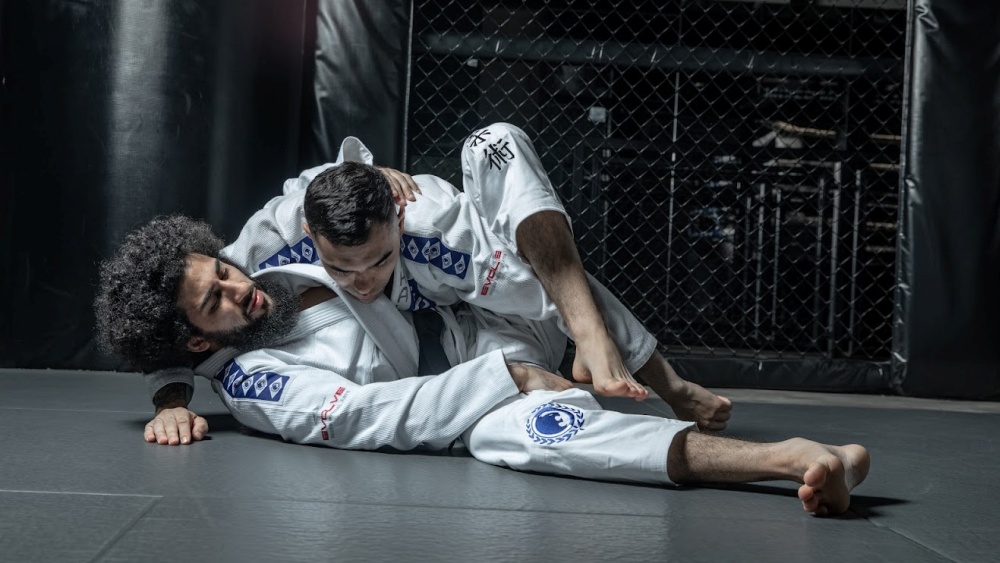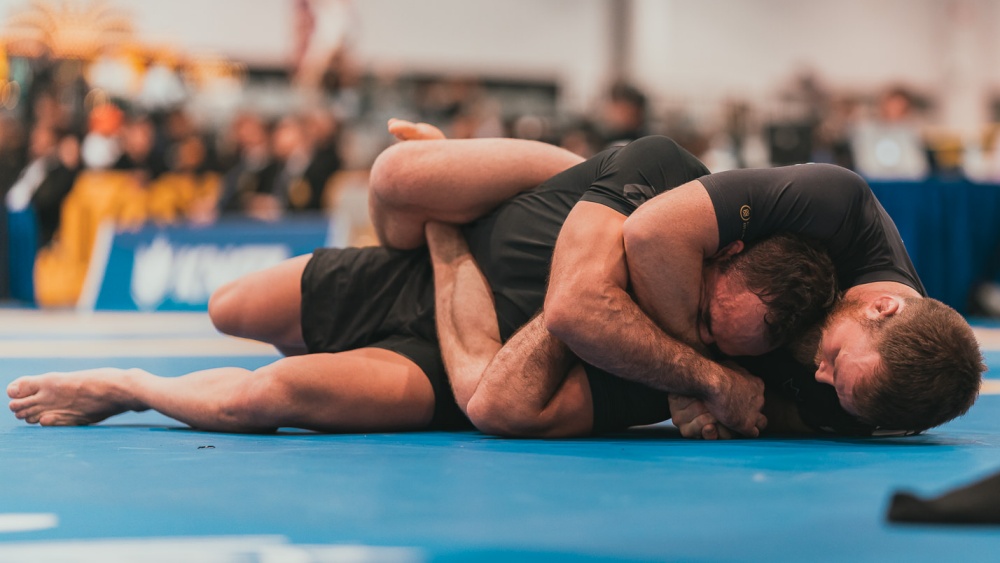Brazilian Jiu-Jitsu is a rapidly evolving martial art that leverages using technique to put opponents in compromising positions. This is a universal philosophy that applies regardless of where you are in a match. Working top positions use the help of gravity (and body positioning) to effectively pin down a resisting person; that’s pretty standard stuff. Playing the bottom game is an entirely different game. Understanding the concepts of correct positioning and off-balancing techniques (kuzushi) is critical so that you can isolate a side and go for sweeps and submissions.
Today we’ll discuss a unique and sometimes overlooked guard in BJJ, the reverse X guard.
Why Play The Bottom Game?
Attacking from the top position is oftentimes the preferred approach for most people. This is especially the case for white and early blue belts, as it is an easy and straightforward approach to go on the offensive.
But as much as we’d like to always stay on top, a fully resisting opponent will do whatever it takes to prevent you from passing their guard. Sweeps, reversals, and scrambles are commonly used to either reset to a neutral position or force you to play on the bottom. Therefore, learning how to play guard is a must for all Jiu-Jitsu practitioners.
The Reverse X Guard
The reverse X guard is a variant of its more famous cousin, the standard X guard. These guards are characterized by using your legs as a barrier by forming an X shape underneath the opponent’s body, with one arm controlling a leg. The X guard is one of the strongest open guards in all of BJJ as it can generate many attacking opportunities.
The main difference between the X and reverse X guard is the placement of the legs. Assuming you are controlling one leg using your right arm, the X guard is where you jam your right leg near the hip while your left is placed underneath your right and blocks near the opponent’s knee. On the other hand, the reverse X guard places your left leg on top while you support it with your right.
Benefits Of The Reverse X Guard
Now let’s look at the benefits of using the reverse X guard. What makes this position different from the standard X guard is that it can be used to lift the opponent up, thus opening up leg lock attacks.
In this video, 10th Planet JJ black belt Brandon Mccaghren shows a basic sequence using the reverse X guard. Starting from the low single leg X guard, you can force the opponent to react in two ways – roll out of the leg entanglement or move towards you as they stand up. Notice Brandon’s body position as he does the entry. You should be at an angle as you enter so that you’ll have an easier time doing the transitions.
If the opponent decides to stand and face you, the first thing that you need to do is to overhook the foot. This ensures that you still have some form of control over your opponent and will be the starting point for your next attack. Next, use your foot to bring them over you as you move at an angle to capture the leg. This should land you in the honey hole (inside sankaku) position, one of the most controlling leg entanglements in all of grappling. Once you are here, you can attack the legs using techniques like the heel hook.
Building A System
Playing open guard can get complicated as you need to have answers for defenses, counters, and recounters of your opponent. This is why many beginners fall into the trap of not trying new variations of open guards. Remember that the training room should be treated like a laboratory; you should not be afraid of trying new techniques.
Becoming a good open guard player will take years of trial and error. Your path to competency in this aspect of BJJ will be filled with challenges, as you’ll surely get your guard passed countless times. Don’t be disappointed when this happens; instead, be glad you are training to improve a part of your game that will stay with you until you reach the black belt level. But until that happens, embrace the grind and be open to learning new things for as long as possible.
The reverse X guard is a great supporting guard and is a valuable weapon if you prefer to attack the legs. Going to the reverse X can be tricky, so learning similar guards like the single leg X and X guard is wise to round out your system. Open guards like the single leg X is invaluable if you want an offensive open guard. It is perhaps one of the best guards to learn because it is robust in both gi and no-gi. It is also versatile enough that you can use it as a hub for your other open guards.
If you are primarily a no-gi player, learning the reverse X guard is guaranteed to elevate your game to greater heights. Going under an opponent’s base is a very effective approach to initiating your offense. Also, since the reverse X guard is not as popular as other forms of open guard, you can use it to surprise unsuspecting opponents. Once you get to your favorite spot, you’ll likely finish with either a sweep or a submission. Drill your favorite entries to the reverse X guard every time you train, preferably on both sides, and you’ll definitely become an expert in the position.
Conclusion
Learning several open guards is a great way to widen your offensive options. The standard and reverse X guard give you many ways to attack the opponent while they have few opportunities to attack you back. As you go up in rank, it is highly recommended that you learn variations of open guards so that you can fight even the toughest of training partners.
Try the reverse X guard today, and let us know what you think of it.
You may also like:


















